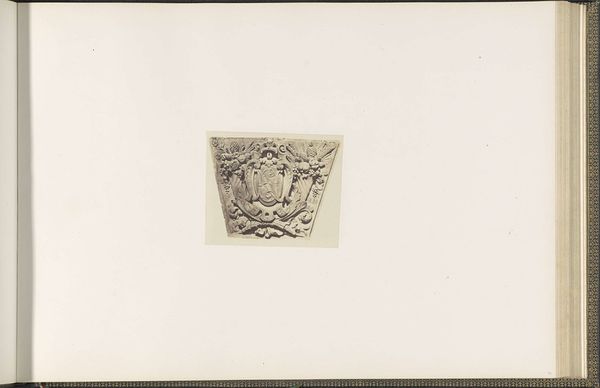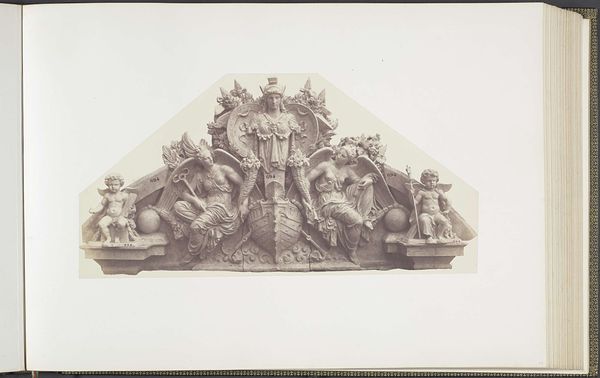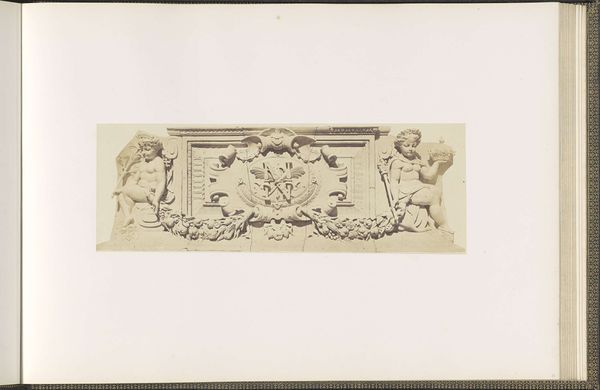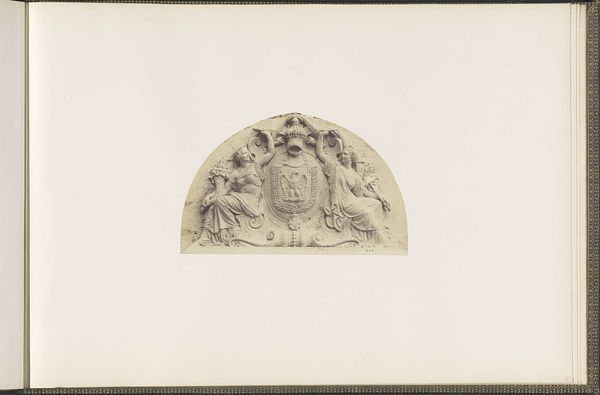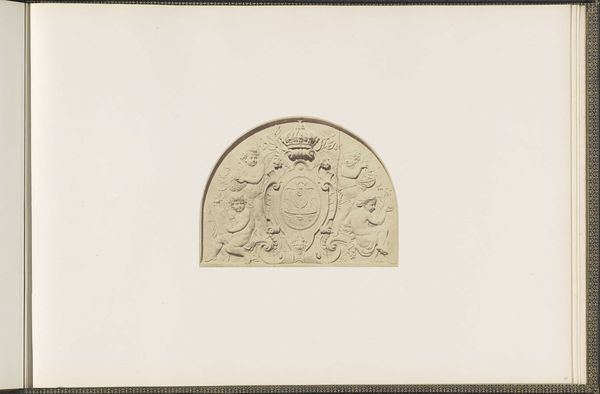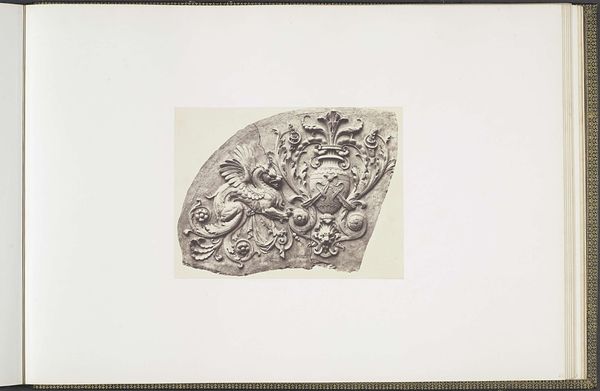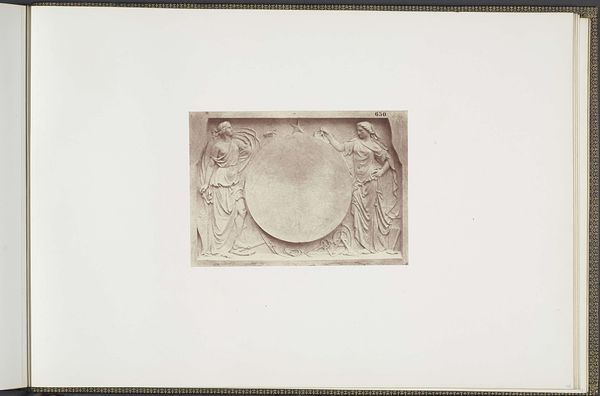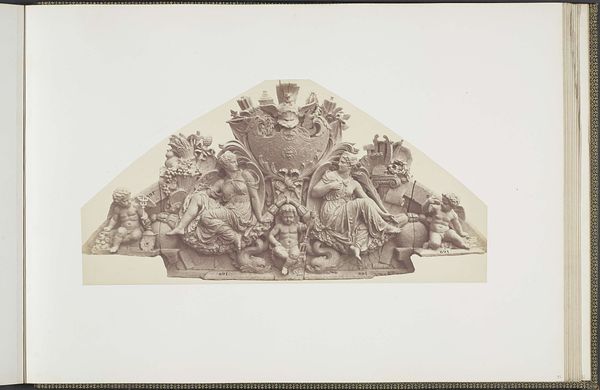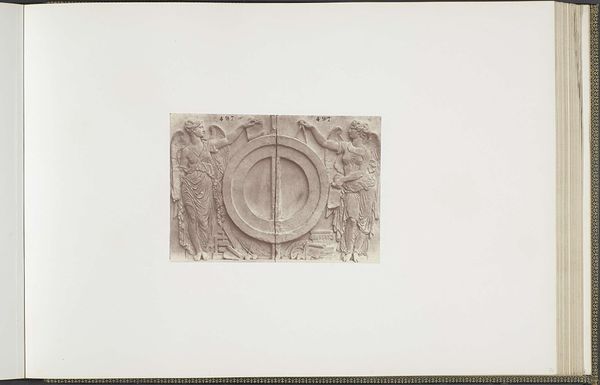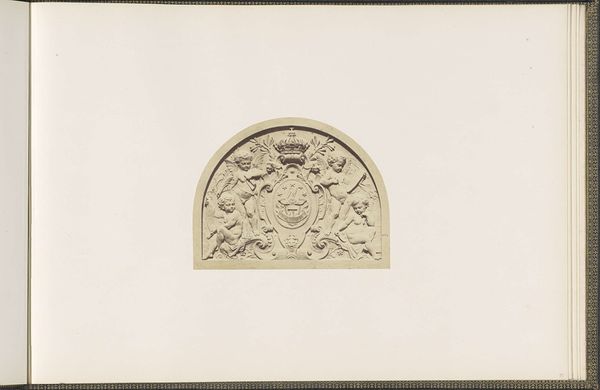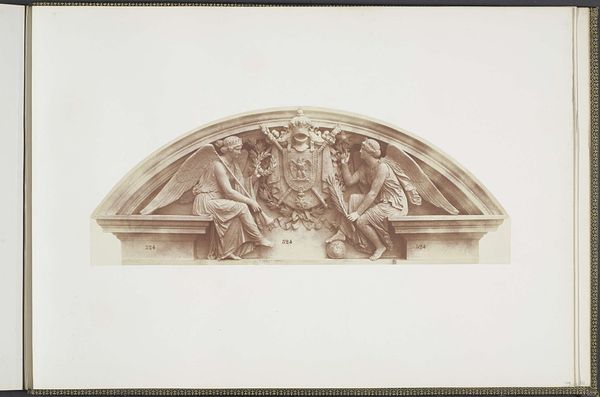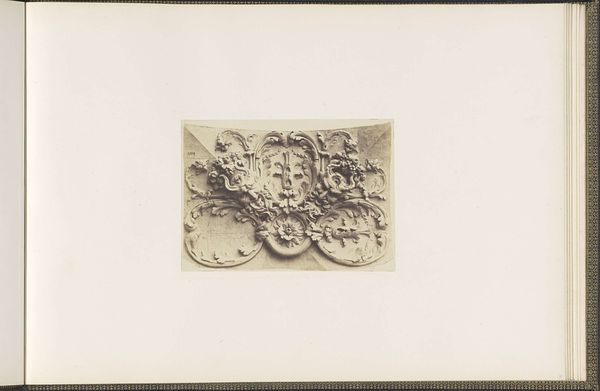
Gipsmodel voor beeldhouwwerk op het Palais du Louvre: "Le Courage civique et la Gloire" door Théodore Gruyère c. 1855 - 1857
0:00
0:00
print, relief, photography, sculpture, gelatin-silver-print, marble
#
allegory
#
neoclassicism
# print
#
relief
#
photography
#
sculpture
#
gelatin-silver-print
#
history-painting
#
marble
Dimensions: height 382 mm, width 560 mm
Copyright: Rijks Museum: Open Domain
Curator: It strikes me immediately as both monumental and a bit severe, perhaps even cold, despite the apparent dynamism of the figures. The low contrast of the photograph also lends to this somber mood. Editor: Here we have a gelatin silver print dating from about 1855 to 1857, which captures the plaster model for a sculpture, "Le Courage civique et la Gloire" by Théodore Gruyère, destined for the Palais du Louvre. What you're observing, I suspect, stems directly from the ideals the piece represents, filtered through a very specific historical and political context. Curator: Do elaborate. Is it simply an allegorical representation of civic duty and national pride? I note the shield and the crown, clearly symbols of the state. Editor: It’s far more involved. The imagery is very deliberately situated within the visual language of Neoclassicism. That’s not merely about aesthetic choices; it evokes a particular concept of the state, echoing Republican ideals, a civic, ordered structure. At this moment, France was emerging from revolution and empire, and seeking a visual language to solidify itself. The figures could be seen as representations of ideals which can also apply to those that exist as a citizen of France and the civic duties of said citizen. Curator: Interesting! So, Gruyère, by using allegorical figures—presumably representing Courage and Glory flanking the imperial emblem— is visually constructing and attempting to unify that concept of national identity. What looks static is actually very carefully constructed visual rhetoric. The texture of the model, preserved in the gelatin silver print, suggests something durable, solid, permanent... qualities associated with the state itself. The composition is also remarkable, that central crest being flanked by figures as the two ideals seemingly fight in tandem, one not existing without the other. Editor: Indeed. Consider how the photographic medium further influences our reading. Photography in this period was often deployed as a tool for documentation and therefore for claiming some degree of truth. Curator: Looking at the history embedded, I wonder if such concepts of Courage and Glory were really extended to all? Editor: That’s a valid, crucial question, opening up conversations about power and inclusion in relation to these constructed narratives of national identity. The image invites interrogation of whose stories are valorized and whose are suppressed. Curator: Well, considering how the artist worked within prevailing academic systems, I see it anew, not just in its aesthetic formalism, but in the larger landscape of its political message and who was included or not, with regards to societal ideas of civic duty at the time. Editor: And with new dialogues on the effect, not just form, this photographic rendering opens up layers for exploration and interpretation in terms of the message it wants to get across.
Comments
No comments
Be the first to comment and join the conversation on the ultimate creative platform.
